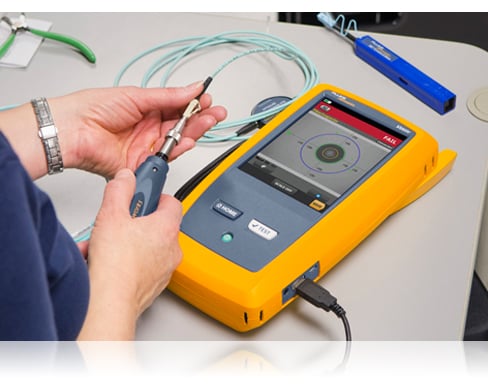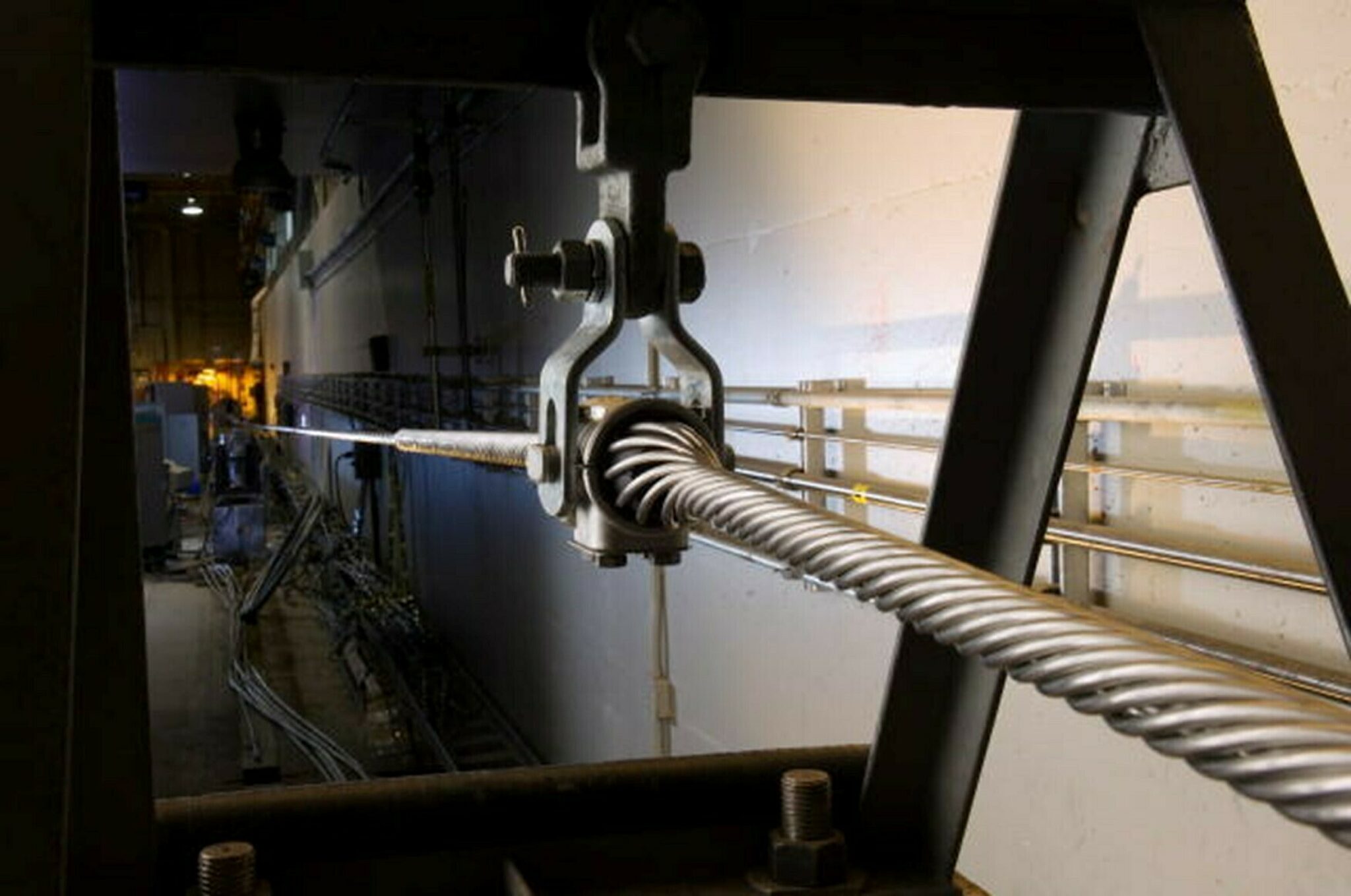The latest optical fibre testing equipment improves troubleshooting and diagnostics in telecommunications.
The latest optical fibre testing equipment improves troubleshooting and diagnostics in telecommunications.
Blog Article
Discover the Value of Optical Fiber Screening in Modern Telecommunications
In the realm of modern telecoms, the value of optical fiber screening can not be overemphasized, as it offers as the foundation for guaranteeing network dependability and performance. What are the specific advantages that routine testing offers, and how might it shape the future landscape of telecommunications?

Recognizing Optical Fiber Testing
Optical fibre testing is a crucial procedure in telecoms that guarantees the honesty and performance of fibre optic networks. This screening includes a range of procedures made to examine the physical and functional qualities of optical fibres - robotic vision. Trick specifications evaluated consist of optical power loss, bandwidth capability, and fault area, which are necessary for maintaining high-quality communication links
The screening process normally involves making use of specialized equipment such as Optical Time-Domain Reflectometers (OTDR) and Optical Power Meters. OTDRs are utilized to identify and define mistakes, entwines, and connectors within the fiber, while power meters determine the transmitted light signal strength to establish efficiency.
Additionally, testing is carried out at numerous phases, including throughout setup, upkeep, and troubleshooting, to ensure that the network meets sector requirements and functional demands. Conformity with standards established by organizations like the International Telecommunication Union (ITU) and the Telecommunications Industry Organization (TIA) is extremely important.
Benefits of Routine Testing
Regular testing of optical fibres returns countless advantages that dramatically enhance network dependability and efficiency. One of the key benefits is the early detection of prospective problems, such as breaks or destruction in the fiber, which can lead to expensive downtime if left unaddressed (robotic vision). By determining these issues proactively, telecoms providers can decrease solution disturbances and make sure constant connection for their clients
Additionally, normal testing aids to keep the stability of signal top quality. As optical fibers age, their efficiency can be influenced by factors such as ecological problems and physical stress and anxiety. Regular evaluations enable the tracking of signal loss and general transmission efficacy, guaranteeing that the network operates at optimal degrees.
An additional significant benefit is compliance with industry criteria. Regular testing supports adherence to regulative requirements, thereby minimizing legal and economic risks linked with non-compliance. It boosts the total lifespan of the fiber facilities by promoting prompt upkeep and repair services.

Typical Testing Techniques
Checking optical fibers employs different methods to make sure the honesty and performance of telecommunications networks. Amongst one of the most usual methods is Optical Time Domain Name Reflectometry (OTDR), which assesses the entire length of the fibre by sending out a pulse of light and gauging the representations brought on by blemishes or breaks. This method supplies thorough details concerning the area and extent of mistakes.
Another prevalent technique is the use of Optical Power Meters, which gauge the amount of light transmitted with the fibre. This method assists identify the loss of signal strength, making sure that it satisfies market requirements. Furthermore, Visual Fault Locators (VFL) are utilized to recognize breaks or extreme bends in the fiber by forecasting a visible laser light into the cable television.
Insertion loss screening is additionally important, as it evaluates the loss of signal power arising from connections and entwines within the network. Additionally, using Polarization Setting Diffusion (PMD) testing evaluates the impact of fibre characteristics on signal integrity.
Each of these methods plays an essential duty in maintaining the efficiency and integrity of optical fiber networks, inevitably adding to seamless telecommunications operations.
Influence on Network Performance
The integrity and efficiency of optical fibre networks straight affect overall network performance. In modern telecoms, the effectiveness of data transmission counts greatly on the top quality of the optical fibers made use of. Any kind of deterioration in the fibre's problem-- whether because of physical damages, my blog contamination, or extreme flexing-- can cause increased depletion and signal loss, substantially affecting information stability and rate.
Routine optical fiber testing is important to recognize and correct possible issues prior to they manifest as network failings or slowdowns. Strategies such as Optical Time Domain Reflectometry (OTDR) and insertion loss screening enable technicians to determine the efficiency of fibre links properly. These tests not only visite site review the physical condition of the fibers however likewise guarantee conformity with industry standards, consequently safeguarding the network's dependability.
Moreover, a properly maintained optical fiber network adds to minimized functional prices and improved client complete satisfaction, as end-users experience less disruptions and greater information prices. Ultimately, the emphasis on strenuous optical fiber testing practices serves as a foundation for maintaining robust telecoms framework, guaranteeing that solution carriers can fulfill the expanding demands for data transfer and connection in today's digital age.
Future Trends in Evaluating
As we look ahead, improvements in modern technology are positioned to improve optical fibre screening in telecoms. The rise of automation and artificial intelligence (AI) is anticipated to improve the effectiveness and precision of screening processes. Automated testing systems can perform extensive assessments with minimal human intervention, considerably minimizing the capacity for mistakes and accelerating time-to-deployment.
Furthermore, the integration of artificial intelligence algorithms will enable predictive upkeep, allowing network carriers to predict potential concerns before they rise into failings. This proactive technique not only improves network integrity however likewise optimizes functional expenses.
One more emerging fad is the advancement of portable screening gadgets that use real-time evaluation - fibre testing equipment. These gadgets will certainly equip service technicians to carry out on-site diagnostics swiftly, promoting quicker resolutions and boosting service top quality
The growth of 5G networks even more necessitates the advancement of screening methodologies. As data transfer demands boost, standard screening methods might no more suffice. Ingenious solutions such as optical time-domain reflectometry (OTDR) and advanced spooky analysis will become critical in guaranteeing the honesty and performance of high-speed connections.

Verdict
Finally, optical fiber testing is necessary for ensuring the integrity and integrity of modern telecommunications networks. Routine site screening practices not only help determine possible issues such as signal loss and faults however additionally add to enhanced network performance and consumer satisfaction. As the demand for seamless connection remains to expand, the fostering of sophisticated screening methods will play an essential role in maintaining high-grade network standards and sustaining the developing landscape of telecoms.
Report this page